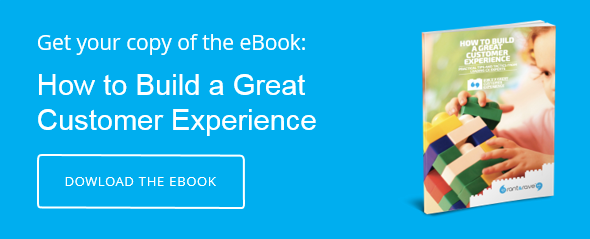 We might only be half way through our advent calendars, but 2016 is starting to look very close indeed. As 2015 draws to a close, it’s time to look ahead and make plans for next year.
We might only be half way through our advent calendars, but 2016 is starting to look very close indeed. As 2015 draws to a close, it’s time to look ahead and make plans for next year.
To help you prioritise your customer experience execution over the next 12 months, here are three trends that we will have a big influence.
#1 CX strategies will continue to be strong... But struggles with implementation will create difficulties...
Typically, CX strategies are well intentioned. They aim to attract more customers, retain existing ones and get them to spend more money. But, when it comes to implementation, these strategies start to fall apart.
One reason for this is organisations have competing priorities, which means that the best intentions are sidelined for short-term targets. Here’s an example. When asked if they’re cost or service led, almost every company on the planet will be adamant that they’re service led. But when things are tight and targets are tough, service will often lose out to cost.
While customer feedback might make a clear case for a product change or modification, these changes don’t always happen. When pitted against factors like damaging an important strategic relationship with a supplier or reducing profitability of a product, customer feedback takes a backseat – even if the strategy is to be a service-led business.
#2 Personalised brand experiences will help deliver competitive advantage

The buzz around personalisation (or personalization if you're from across the pond) always seems to spike in December – take a look at this Google Trends chart! It’s time now to move away from buzz and towards action.
Let’s be clear. Personalisation is not just about using personalisation tokens in your email marketing. It’s about bringing together everything you know about your customers to provide a truly individual experience across every channel. So whether you tailor your website content, because you know a customer has been looking at your mortgage products, or you change the way you answer the call, because you know the customer is due to renew soon, personalisation is about providing that individual experience – not a one-size fits none approach.
We are in an age of information infancy - for many years we’ve seen companies collect feedback from customers. But they don’t do anything with it! 2016 has to be the year we actually use this data to act quickly on customer knowledge.
You probably already have all the information you need within your organisation. It’s now about joining up the dots and doing something helpful, useful and interesting for your customers.
#3 Sentiment analysis will be the key to your customer’s hearts

Many companies have bought into the idea of measuring customer experience. They collect a number and see how they can improve it; trying to drive up the score. But few companies genuinely pay attention to the ‘why’ – why did my customer rate me that way?
The problem with traditional surveys is they don’t allow customers to share their feelings. This means companies don’t know anything about the emotion behind these scores. As well, numbers don’t always tell you the full story. Customers can be very happy with parts of their experience, but frustrated or disappointed with another. Relying just on metrics means you miss these subtleties.
Linked to personalisation, companies can use sentiment analysis to segment their customers into smaller groups, based on how they’re feeling about the brand at any one time. The advantages of this approach? Companies will be able to identify ranters and do something to help them before it’s too late i.e. before they leave you for your competition.
Sentiment analysis will also help empower the frontline and drive up employee engagement, using praise from ravers to prove it’s a job well done.
Rather than seeing customer experience as a project, initiative or programme, see it as a constantly evolving process with enduring principles. Rather than seeing it as a number, see it as the thoughts, feelings and emotions of your customers - in real-time.



